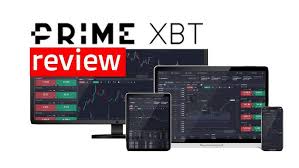
Leverage is a powerful tool in the world of trading, enabling traders to maximize their potential returns by borrowing funds to increase their position size. PrimeXBT, a leading trading platform, has gained significant attention for its innovative features that allow traders to alter their leverage settings. In this article, we will delve into how leverage changes on PrimeXBT work, their implications for different trading strategies, and tips for effective management of leverage. For more insights and reviews, visit primexbt change leverage https://www.review-primexbt.com/.
What is Leverage in Trading?
Leverage in trading refers to the use of borrowed capital to increase the potential return on investment. Traders can open positions larger than their actual account balance, effectively amplifying both potential profits and potential losses. For instance, with a leverage of 1:100, a trader can control $100,000 by depositing only $1,000. While this can lead to significant gains, it equally increases the risk of substantial losses.
Understanding PrimeXBT’s Leverage Mechanics
PrimeXBT offers traders the ability to customize their leverage settings, which can range widely depending on the asset being traded. This flexibility is particularly beneficial for seasoned traders who wish to fine-tune their risk management strategies. However, new traders should approach leverage with caution to avoid the pitfalls of high-risk trading.
How to Change Leverage on PrimeXBT
Making adjustments to leverage on PrimeXBT is straightforward. Here’s how to do it:
- Log in to your PrimeXBT account.
- Navigate to the “Leverage” option in the trading settings.
- Select the asset for which you want to adjust the leverage.
- Choose your desired leverage level from the available options.
- Confirm the changes to apply them before executing your next trade.
It’s important to note that changing leverage will affect existing positions as well, so traders should be cautious and aware of how their current positions will be influenced.
The Impact of Changing Leverage on Trading Strategies
Adjusting your leverage can impact not only your potential profits but also your overall trading strategy. Here’s how different leverage levels can affect trader behavior:
High Leverage: Potential and Pitfalls
While high leverage can lead to substantial gains, it can also increase volatility and risk. Traders using high leverage must be disciplined in their risk management practices. Strategies such as setting tight stop losses and utilizing technical analysis become more critical. Moreover, high volatility markets can lead to rapid losses if positions are not monitored closely.
Low Leverage: Stability and Control

Low leverage, on the other hand, may result in lower potential profits but also reduces the risk of large losses. This approach can be more suitable for newer traders or those who prefer a more conservative trading style. It allows for greater control and less emotional stress when trading.
Best Practices for Leverage Management
Managing leverage effectively is key to successful trading. Here are some best practices for traders on PrimeXBT:
- Understand Market Conditions: Before adjusting leverage, assess the market’s volatility. In unstable markets, consider reducing leverage to manage risk better.
- Utilize Stop-Loss Orders: Setting stop-loss orders can protect your funds by automatically closing positions at predetermined levels to prevent excessive losses.
- Regularly Review Your Strategy: Continuously analyze your trading performance and adjust your leverage accordingly. Keep a trading journal to track what works and what doesn’t.
- Educate Yourself: Staying informed about market trends, asset performance, and other traders’ strategies can help you make more informed decisions about leveraging.
Advanced Trading Strategies Involving Leverage Changes
As traders become more advanced in their techniques, they might consider various strategies that incorporate changing leverage. Here are a few examples:
Scalping with Leverage
Scalping is a strategy that involves making numerous trades throughout the day to capture small price changes. Traders can benefit from high leverage during these quick trades but must be cautious to manage risks effectively.
Hedging with Different Leverage Settings
Some traders might choose to hedge their positions by using different leverage settings across various assets. This requires a deep understanding of market correlations and risks but can be effective in minimizing losses.
Trend Trading with Dynamic Leverage
Dynamic leverage adjustments can be beneficial for traders who follow market trends. Increasing leverage when a trend is confirmed can amplify gains, while reducing it during corrections can help secure profits.
Common Mistakes to Avoid with Leverage
Even experienced traders can fall prey to common pitfalls when dealing with leverage. Here are some mistakes to avoid:
- Ignoring Market Volatility: Not considering the market volatility before adjusting leverage can lead to unexpected losses.
- Over-leveraging: Trying to maximize profits with excessively high leverage can backfire, especially in turbulent market conditions.
- Neglecting to Use Stop-Losses: Failing to protect positions with stop-loss orders puts traders at greater risk of significant losses.
- Emotional Trading: Allowing emotions to drive trading decisions, especially after losses, can lead to irrational actions and further losses.
Conclusion
Changing leverage on PrimeXBT presents both opportunities and challenges for traders. By understanding how to adjust leverage effectively, and by implementing strong risk management strategies, traders can optimize their performance in the markets. It’s essential to stay educated and disciplined, continuously adapting strategies to the ever-changing market landscape. Whether you choose high or low leverage, the key is to find a balance that suits your trading style and risk tolerance. Always remember, effective leverage management is crucial for long-term trading success.


